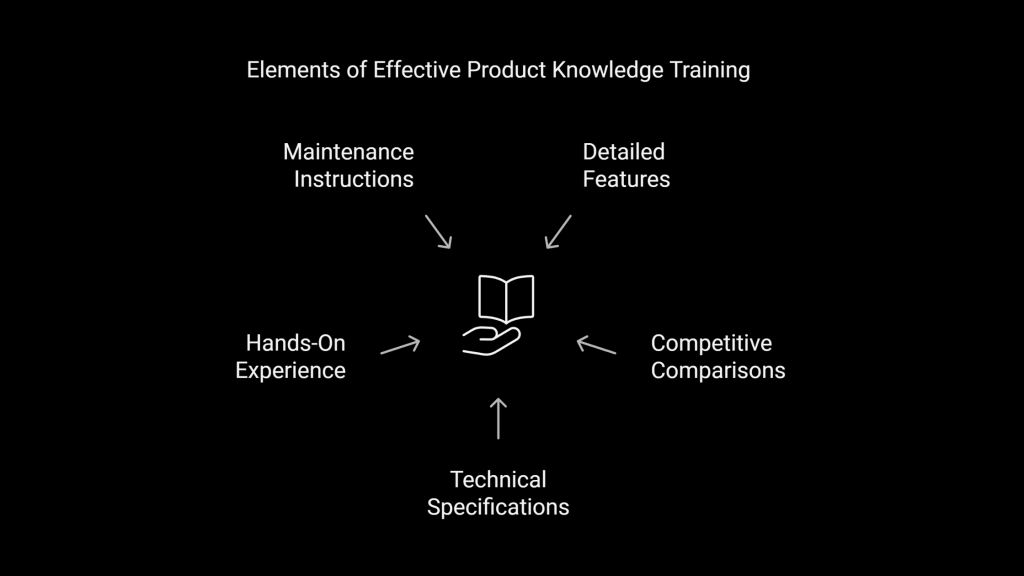
In today’s rapidly evolving world, developing new skills has become essential rather than optional. The concept of education as something that ends with formal schooling has given way to lifelong learning—a continuous process of acquiring knowledge and abilities throughout one’s life. This approach to personal and professional growth is particularly relevant in the Philippines, where adaptability in the job market can significantly impact career trajectories and opportunities.
Understanding the Value of Continuous Skill Development
The pursuit of developing new skills extends far beyond career advancement, though that remains a primary motivator. Research consistently demonstrates that ongoing learning contributes to:
- Enhanced cognitive function as we age
- Greater adaptability during periods of change
- Improved confidence and self-efficacy
- Expanded social and professional networks
- Increased job security and employability
These benefits compound over time, making lifelong learning one of the most valuable investments in personal development. The World Economic Forum estimates that by 2025, 85 million jobs may be displaced by technological shifts, while 97 million new roles may emerge. This underscores why continuous learning has become essential for maintaining relevance in any field.
Identifying Valuable Skills Worth Developing
Before committing time and resources to developing new skills, strategic assessment of which abilities will provide the greatest return on investment is crucial.
High-Value Skill Categories
Several categories consistently demonstrate lasting value across industries:
- Digital literacy and technology skills – From basic software proficiency to specialized technical knowledge
- Communication abilities – Written, verbal, and cross-cultural communication
- Critical thinking and problem-solving – Analytical reasoning and creative solution generation
- Adaptability and learning agility – The capacity to quickly master new concepts and systems
- Emotional intelligence – Understanding and managing emotions in yourself and others
While specific technical skills may become obsolete, these foundational capabilities maintain relevance regardless of technological or market changes.
Conducting a Personal Skills Audit
To identify which skills warrant development, consider:
- Skills gaps in your current role or desired position
- Emerging trends in your industry
- Natural abilities that could be enhanced through structured learning
- Areas of personal interest that align with potential career paths
- Skills that complement your existing knowledge base
This targeted approach ensures learning efforts deliver meaningful results rather than scattered knowledge acquisition.
Creating an Effective Learning Strategy
The path to developing new skills proves most successful when approached systematically rather than haphazardly.
Setting Clear Learning Objectives
Effective skill development begins with specific, measurable goals:
- Define exactly what proficiency looks like
- Establish concrete milestones to track progress
- Create a realistic timeline for achievement
- Identify how you’ll measure mastery
- Connect the skill to practical applications
For example, rather than “learn data analysis,” a stronger objective might be “master Excel pivot tables and create three analytical reports for my department within two months.”

Selecting the Right Learning Methods
Different skills require different learning approaches. Consider these options when developing new skills:
- Formal education – Degrees, certificates, or accredited courses
- Online platforms – Self-paced courses through e-learning providers
- Experiential learning – Projects, volunteering, or real-world applications
- Social learning – Communities of practice, mentorship, or peer teaching
- Microlearning – Brief, focused learning segments consumed regularly
Most successful skill development combines multiple methods, leveraging their complementary strengths. For instance, an online course might provide theoretical foundations, while a practice project offers hands-on application.
Creating Sustainable Learning Habits
Consistency proves more impactful than intensity when developing new skills. Establish sustainable practices by:
- Scheduling dedicated learning time protected from interruptions
- Breaking large skills into manageable sub-skills
- Using spaced repetition to enhance retention
- Connecting new information to existing knowledge
- Implementing immediate application of concepts
Research shows that 20 minutes of daily practice often yields better results than occasional marathon sessions, particularly for complex skills requiring neural pathway development.
Overcoming Common Learning Barriers
The path to developing new skills inevitably presents obstacles that must be navigated successfully.
Managing Time Constraints
For busy professionals and students, finding time for skill development requires strategic approaches:
- Utilize “time pockets” throughout the day (commutes, lunch breaks, waiting periods)
- Replace passive consumption (social media scrolling) with active learning
- Implement “learning sprints” of focused, distraction-free study
- Combine learning with existing activities (podcasts during exercise, for instance)
- Use calendar blocking to prioritize skill development
These techniques make learning accessible even within packed schedules.
Maintaining Motivation During Plateaus
Learning curves rarely progress linearly. When motivation wanes:
- Reconnect with your purpose for acquiring the skill
- Celebrate incremental achievements
- Seek supportive community or accountability partners
- Temporarily shift to adjacent sub-skills
- Document progress to visualize growth over time
Understanding that plateaus represent consolidation phases rather than failures helps maintain momentum during challenging periods.

Addressing Financial Limitations
Cost need not prohibit developing new skills:
- Utilize free resources from libraries, educational websites, and open-source communities
- Explore employer education benefits and development programs
- Investigate scholarships, grants, and income-share agreements
- Consider skill exchanges where you trade expertise with others
- Start with low-cost options before investing in premium resources
Resourcefulness often reveals affordable or free alternatives to expensive learning programs.
Leveraging Technology for Skill Acquisition
Modern technology has revolutionized approaches to developing new skills, making learning more accessible, personalized, and efficient.
Digital Learning Platforms and Tools
The expanding ecosystem of online learning resources includes:
- Comprehensive course platforms (Coursera, edX, Udemy)
- Interactive coding environments (Codecademy, freeCodeCamp)
- Language learning applications (Duolingo, Babbel)
- Creative skills platforms (Skillshare, CreativeLive)
- Professional certificate programs from industry leaders
These platforms often provide structured curriculum paths that guide learners from foundational to advanced concepts.
Utilizing Artificial Intelligence for Personalized Learning
AI-powered learning tools can accelerate skill acquisition through:
- Adaptive content that adjusts to your proficiency level
- Personalized practice sessions targeting weak areas
- Intelligent scheduling of review based on forgetting curves
- Natural language processing for immediate feedback
- Recommendation engines suggesting relevant resources
These technologies create custom learning experiences that optimize knowledge retention and application.
The Role of Social Learning in Skill Development
While technology enables independent study, human connection remains invaluable when developing new skills.
Finding Communities of Practice
Learning communities provide support, accountability, and collective wisdom:
- Professional associations related to your field
- Online forums and social media groups
- Local meetups and skill-sharing gatherings
- Mastermind groups focused on mutual growth
- Company-sponsored learning circles
These communities offer both emotional support and practical knowledge exchange during the learning process.
Maximizing Mentorship Opportunities
Strategic mentorship dramatically accelerates skill development:
- Identify potential mentors with demonstrated expertise
- Approach with specific, time-bounded requests
- Prepare thoughtful questions that respect their time
- Offer value in return through assistance or insights
- Implement advice and report results
As leadership expert John C. Maxwell notes, “One of the greatest values of mentors is the ability to see ahead what others cannot see and to help them navigate a course to their destination.”
Professional development Through Deliberate Practice
The concept of deliberate practice—developed by psychologist Anders Ericsson—provides a framework for efficiently developing new skills to exceptional levels.

Elements of Effective Practice
Deliberate practice differs from simple repetition by incorporating:
- Focused attention on specific aspects needing improvement
- Immediate feedback from experts or assessment tools
- Working at the edge of current abilities (the “stretch zone”)
- Strategic decomposition of complex skills into components
- Regular reflection on performance and adjustment of approach
This structured practice methodology transforms ordinary effort into extraordinary results across domains from music to medicine to programming.
Creating Feedback Loops
Rapid improvement requires continuous evaluation and adjustment:
- Seek objective assessment from knowledgeable sources
- Record performances for self-review when possible
- Use rubrics to evaluate against established standards
- Compare current work against previous attempts
- Solicit specific critiques rather than general impressions
The most effective learners actively seek feedback rather than avoiding potential criticism.
Integrating New Skills Into Professional Practice
The ultimate test when developing new skills comes in practical application within real-world contexts.
Finding Application Opportunities
Skills develop most rapidly when regularly applied:
- Volunteer for projects utilizing target skills
- Create side projects demonstrating new abilities
- Offer pro bono services to build experience
- Request stretch assignments incorporating learning goals
- Design personal challenges applying developing competencies
These applications bridge the gap between theoretical knowledge and practical proficiency.
Documenting and Showcasing Skills
As competencies develop, strategic documentation enables recognition:
- Create portfolios displaying practical applications
- Earn relevant certifications and credentials
- Update professional profiles with new capabilities
- Track achievements and outcomes from skill application
- Prepare concrete examples for interviews and evaluations
This evidence strengthens professional positioning while reinforcing personal confidence in newly developed abilities.
Recommended Resources
For those committed to developing new skills, these resources provide valuable guidance:
- Books examining learning science and cognitive development
- Productivity systems designed for continuous improvement
- Assessment tools identifying personal learning preferences
- Industry-specific skills roadmaps and competency frameworks
- Learning journals and reflection templates for tracking progress
FAQ Section
How long does it typically take to develop proficiency in a new skill?
While popularized concepts like the “10,000-hour rule” suggest mastery requires extensive practice, meaningful proficiency often develops within 20-100 hours of deliberate practice for many practical skills. The timeline varies based on skill complexity, prior experience with related concepts, learning method quality, and practice consistency.
What’s the best approach to learning multiple skills simultaneously?
While possible, dividing attention between multiple complex skills typically slows progress in each area. Consider either focusing primarily on one skill with minimal maintenance of others, or selecting complementary skills that reinforce each other. When pursuing multiple skills, structured scheduling and clear boundaries between practice sessions become especially important.
Conclusion
The commitment to lifelong learning and developing new skills represents perhaps the most valuable investment in an uncertain future. By approaching skill development strategically—identifying high-value abilities, implementing effective learning methods, overcoming common barriers, and applying new knowledge practically—you establish a pattern of growth that compounds throughout your career. In a world where change accelerates continuously, the capacity for adaptation through learning becomes the ultimate competitive advantage and source of professional security.
